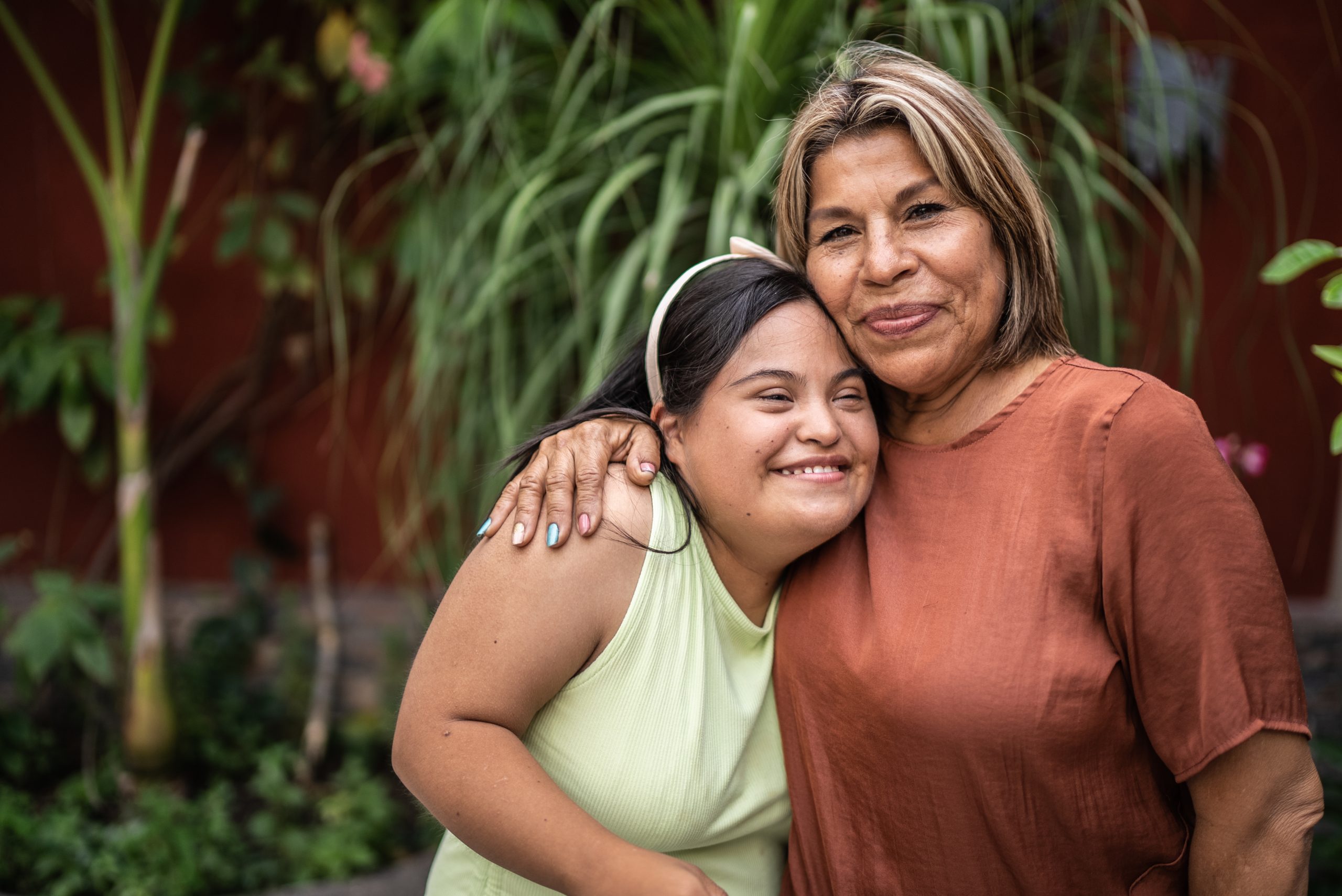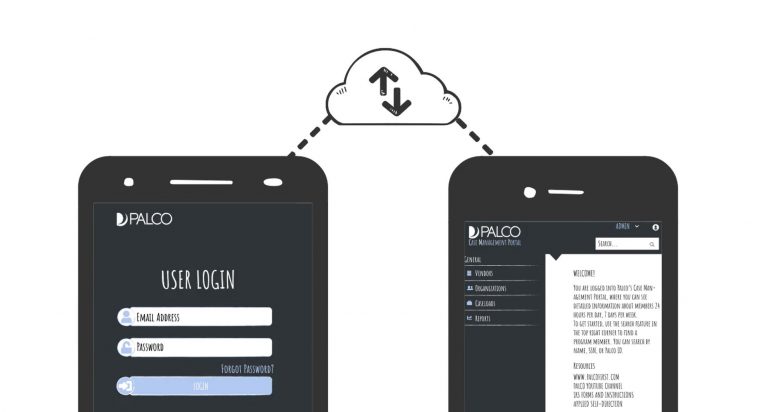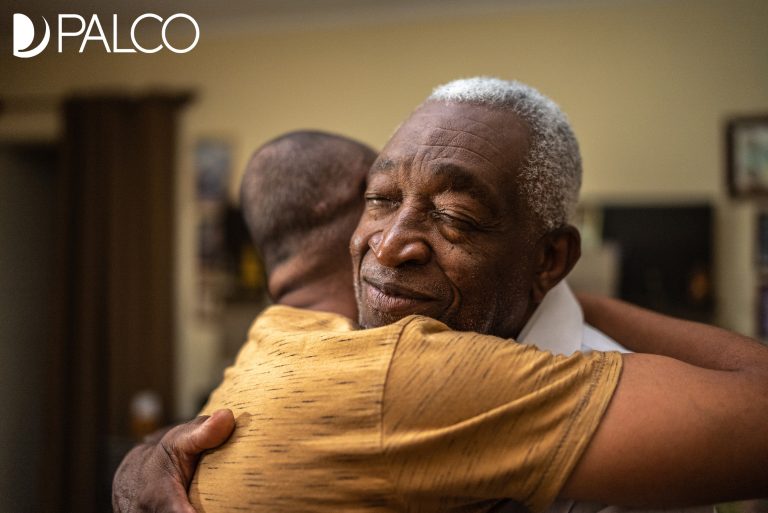Self-Direction in the Hispanic Community
The overall goal for self-direction in general is to give the elderly and individuals with disabilities their independence, thus creating a naturally inclusive model that strives to serve all populations. While this is true, there are still various populations that go underserved, and that includes the Hispanic population. Below, we discuss the challenges this population faces in the self-direction industry and what may explain the reason behind the population being underserved. We also talk about what Palco is doing to help reach this community better and what self-direction as a whole can do better in order to be more inclusive to the Hispanic population.
Population Statistics
According to the United States Census Bureau, in 2010, Hispanic or Latino was the second largest racial or ethnic group at 16.3% or 50,477,594. In 2020, it remained the second largest racial or ethnic group, but grew to 18.7% or 62,080,044. While the numbers in the graph below for the 2020 Hispanic or Latino population vary slightly (due to the visualization being released prior to the 2020 census), you can still see that the population remains in a steady growth, projected to grow to 111.2 million, or 28% of the population, by 2060.
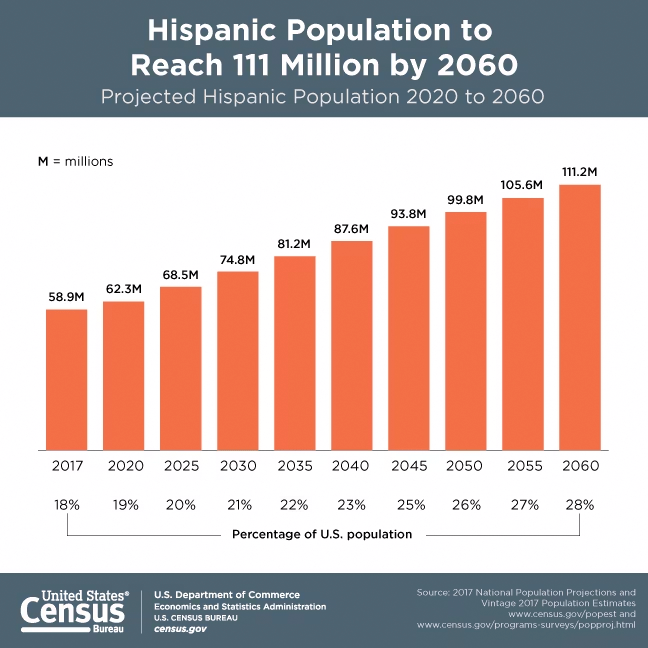
The sheer volume of population growth is eye opening, but perhaps even more surprising is the fact that the Hispanic community is still being left behind in the self-direction realm. For this specific population, we dove into some more detailed population statistics regarding Hispanic individuals with disabilities:
- The United States Department of Labor says that there are approximately 5.1 million Hispanic adults aged 16 and older with disabilities in the United States.
- The United States Census shows that 22.9 percent of people with an activity-limiting health condition were Hispanic.
- The Centers for Disease Control and Prevention says that one in six Hispanic individuals have a disability.
- A 2017 study titled “Aging and Disability Among Hispanics in the United States: Current Knowledge and Future Directions” said, “The older population in the United States has experienced unprecedented growth in the past several decades. Hispanics are the fastest growing segment of this population. In 2010, 2.9 million U.S. Hispanics were 65 or older (7.1% of age 65+ population) and this number is projected to increase to over 17.5 million (19.8% of 65+ population) by 2050.”
Those numbers are staggering, but don’t even tell the entire story. In fact, the number of disabled Hispanic individuals living in the United States is likely much higher. According to “Racial Inequity in Special Education,” a study edited by Daniel J. Losen and Gary Orfield, “Latinos are generally under-identified in cognitive disability categories, which raises the question of whether their needs are being considered.”
With this massive population continually growing in the United States, why is it then that they remained underserved in this specific industry?
Cultural Barriers
We all know that different cultures around the world hold vastly different values and beliefs, and that definitely rings true for the Hispanic population in the United States and is what provides some significant barriers when it comes to self-direction, but keep in mind, the Hispanic population in the United States represents numerous countries, thus providing varying customs and cultures, so not all Hispanic populations may have hold these same values.
First, we will recognize the most obvious cultural difference, and one that provides a barrier to nearly all aspects of life for many Hispanic individuals living in the United States: Language. Although the Hispanic population has grown at an incredibly rapid pace, not all informational materials are accessible to those who don’t speak English. This already provides an enormous barrier, as those individuals who may only speak Spanish don’t have the knowledge of the programs offered to them.
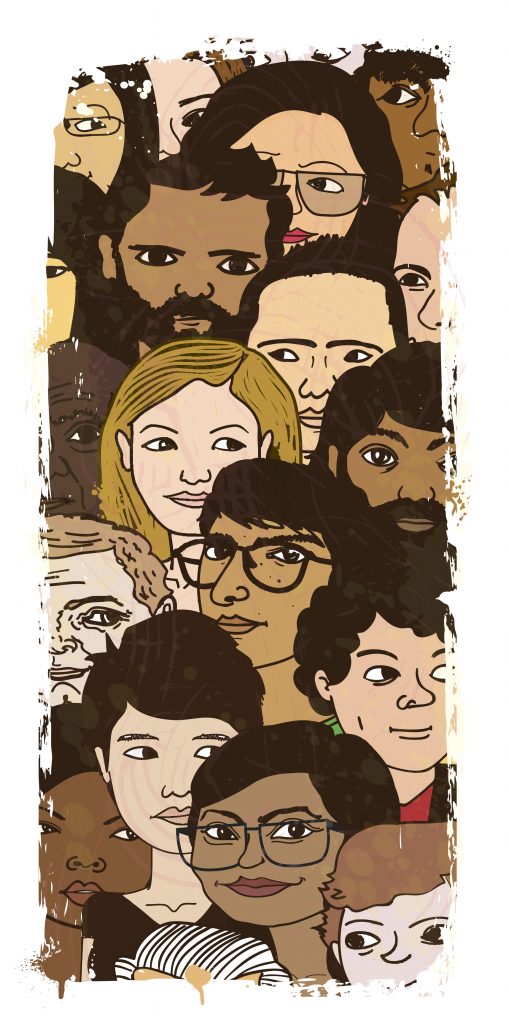
Next comes the general concept of independence. In many Hispanic cultures (again, this may not ring true for all countries of origin, so just take this as a generalization), and really many other cultures outside of the United States, independence or interdependence are valued far differently. In fact, the concept of “independence” in the United States reflects Anglo-centric values, where the overall goal of independence is moving out of the family home before marriage to live on your own.
In many Hispanic cultures, the tight-knit, familial culture sees individuals remaining in the home to help take care of varying family needs, and that is the norm. Not only is it the norm, it is also valued and seen as respect for helping the family function as a unit. This translates directly to self-direction, as Hispanic cultures often value the community and family role in taking care of individuals with disabilities. This also includes the tendency for Hispanic cultures to make familial decisions as a whole for individuals of the family rather than the individual making decisions themselves. While you might ask yourself, “Well, isn’t that exactly what self-direction is all about?,” there is definitely more to the story, including the hesitation and resistance in asking the government for help.
Governmental Barriers

Regardless of legal status, many Hispanic individuals, and really many U.S. immigrants in general, have concerns when reaching out to the government for help, fearing it will jeopardize their legal status.
In addition to this fear, there is often a general distrust for government, both for the government in an individual’s country of origin and the United States government.
Lastly, the complex government process and constant red tape required for various processes within the government provide another disincentive for enrolling in these self-direction programs.
Clearly there are plenty of barriers for the Hispanic community when considering self-direction in caring for their loved ones. These barriers may make it seem that the issue is insurmountable, but there are ways we can (and do) help!
- Provide more accessible information in various languages to those seeking information.
- Encourage diverse interpretations of independent living. For example, lean into the familial and community values that Hispanic cultures hold onto, and let them know that by choosing self-direction, as opposed to other forms of caregiving, they can ensure only trusted individuals enter the home to provide care. Not only that, but they get paid, when they previously would have done the job for free.
- Increase the number of bilingual/bicultural staff that can communicate with individuals.
- Provide training in cultural responsiveness.
- Reduce systems that might act as disincentives.
- Adopt effective outreach methods. This can be done through bilingual marketing and informational materials, forming relationships with key areas in the Hispanic community including churches, shops, advocacy groups, etc.
Self-direction has a long way to go to integrating more of the Hispanic population into the industry, expanding care to all those who need it, but we can use some of these methods mentioned above to give independence to those who deserve it, no matter an individual’s background, language, or culture.

by Spencer Griffin
Marketing Director

